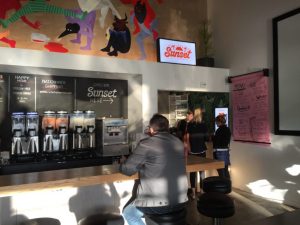Jane Jacobs & Holes in the Wall
By IBI Insights
Date
September 30, 2016What are the vital ingredients for a thriving neighbourhood? Quality public spaces, design that supports street life, and a mix of functions are key to creating fertile ground for community growth, but it doesn’t stop there. Writing in 1956, Jane Jacobs underlines the importance of “hole in the wall” shops and restaurants. From her street-level perspective, these places, and the people who run them, are local communications hubs, centres of community stewardship and mediators – the glue that holds a neighbourhood together. In some cases, having these hubs can mean the difference between life and death. Fast forward 60 years. The threats of widespread demolition and “renewal” have receded, but in many districts, the humble hole in the wall faces new pressures, this time from gentrification. In either context, when local shops are replaced – either by renewal projects or chain stores – a sense of community is often diminished.

A take-out restaurant in Seattle, located inside a bar. Sharing the cost of rent while offering more value to customers
So what can be done to address this issue? In her article, Jacobs identifies four steps that planners, architects and decision makers should take. And standing on the shoulders of a giant, I respectfully offer two more. First, on the policy and zoning front, flexible arrangements that maximize the use of a single space can be supported. On a basic level, this includes live-work spaces and light industry juxtaposed with other uses. An even more open approach is to enable multiple businesses to share use the space. Seattle offers a number of excellent examples of this, where bars have rented small sections of their spaces to take-out restaurants. This enables several small businesses to share the burden of rising rents, while also creating an even greater draw for customers. For new development on large sites, planners, architects and developers can commit to include certain businesses (ie. grocery stores and cafes) and encourage fine-grain street level development. This can be achieved even in cases where big box stores seek to enter the neighbourhood, as this “vertical power centre” in Vancouver demonstrates. Be it 1956 or 2016, small businesses face unique challenges that require distinct and targeted responses. As an integral part of urban social resilience support for the local hole in the wall is worth the effort.







